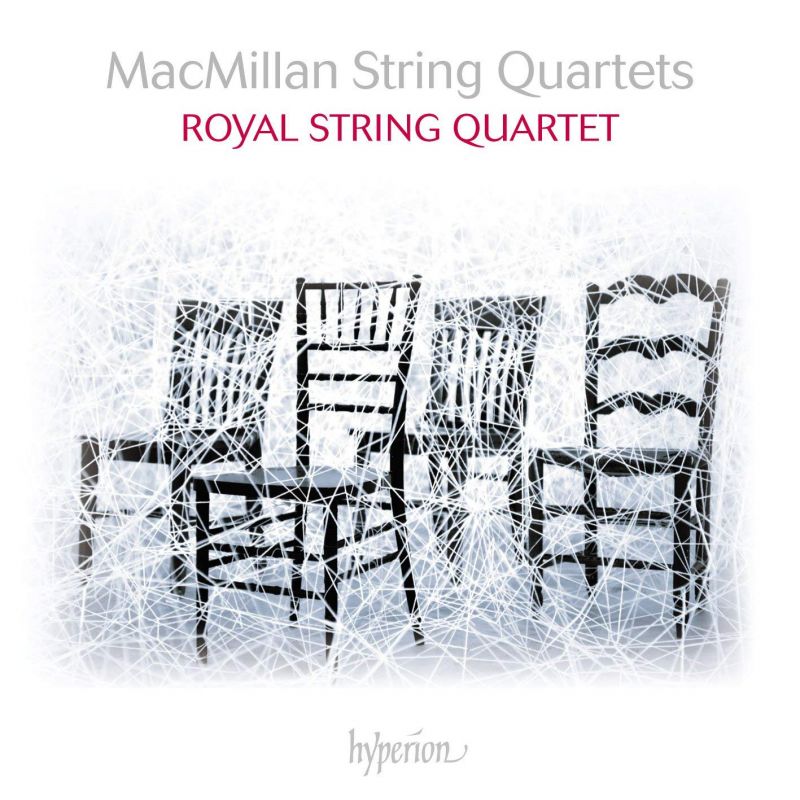MACMILLAN String Quartets (Royal Quartet)
View record and artist detailsRecord and Artist Details
Composer or Director: James MacMillan
Genre:
Chamber
Label: Hyperion
Magazine Review Date: 09/2018
Media Format: CD or Download
Media Runtime: 71
Mastering:
DDD
Catalogue Number: CDA68196

Tracks:
| Composition | Artist Credit |
|---|---|
| String Quartet No 1, 'Visions of a November Spring' |
James MacMillan, Composer
James MacMillan, Composer Royal String Quartet |
| String Quartet No 2, 'Why is this night different?' |
James MacMillan, Composer
James MacMillan, Composer Royal String Quartet |
| String Quartet No 3 |
James MacMillan, Composer
James MacMillan, Composer Royal String Quartet |
Author: Pwyll ap Siôn
A solitary, sustained D in the viola, heard at the beginning of MacMillan’s early two-movement String Quartet No 1, Visions of a November Spring, emerges from the shadow of silence. Inaudible at first, it is taken up in turn by the other string instruments in ever more aggressive and confrontational exchanges. Set out on a much larger scale, the second movement’s main building blocks are formed out of three distinct ideas. Presented one after the other in the opening section, they are knotted together in a densely constructed development section. As the music hurtles towards a final, unhinged dancelike flourish, MacMillan’s stroke of genius here is to suddenly recall the end of the opening movement, and the realisation that what has been heard all along is a more elaborate exposition of it.
Composed in 1998, the Second Quartet, subtitled Why is this night different? reflects a shift towards a style that is more expressive and direct. A tense focus is maintained throughout, partly achieved through the quartet’s extended single-movement design, but also inspired by the work’s programmatic content, which takes the flight of the Children of Israel from Egypt as its starting point. Soaring melodic lines, shaped and coloured to give the impression of improvised music, act as a transcendent metaphor for the children’s emancipation from slavery, although an uncertain conclusion, ending with a low E flat in the cello, suggests that the victory is a pyrrhic one.
In contrast, the dense tangle heard in the String Quartet No 3 results from the wilful, stubborn and fiercely independent characterisation of each string part, whose lines in the first movement appear to converge as if by accident rather than design. The second movement is textbook MacMillan, with sounds and silences, emptiness and excess foreshadowing the final moments of the quartet – a thread of diminishing lines disappearing into an empty void. Excellent throughout, the Royal Quartet impart a brittle edge to the sound that brings MacMillan’s quartets closer to mid-century European modernists such as Lutosawski and Penderecki. But there are moments of intense, lyric beauty here too.
Discover the world's largest classical music catalogue with Presto Music.

Gramophone Digital Club
- Digital Edition
- Digital Archive
- Reviews Database
- Full website access
From £8.75 / month
Subscribe
Gramophone Full Club
- Print Edition
- Digital Edition
- Digital Archive
- Reviews Database
- Full website access
From £11.00 / month
Subscribe
If you are a library, university or other organisation that would be interested in an institutional subscription to Gramophone please click here for further information.




